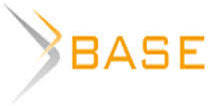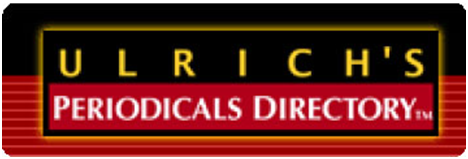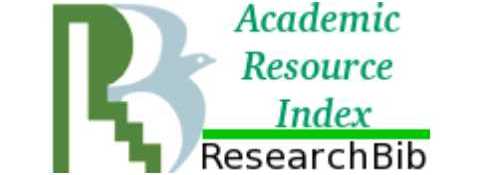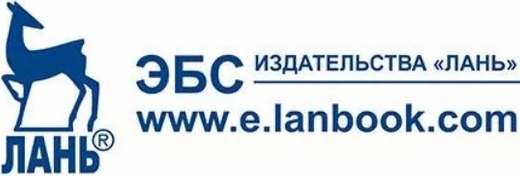Out of the COVID-19 crisis: innovative strategies
The COVID-19 pandemic has severely impacted the global economy, devastating the tourism industry around the world. The purpose of this article is to explore innovation as a way to overcome the economic impact of the pandemic on the international tourism market. The authors reviewed four approaches to managing crises and disasters. The study focuses on innovations being introduced to combat the effects of the COVID-19 pandemic. The data was explored using content analysis. In terms of research topics, the authors identified three historical areas for studying innovation in the service sector. The authors considered the following typologies of innovations: incremental, radical, service, product, process, marketing, organizational, technological. The pandemic has led companies to try to innovate at the organizational level. Changes in consumer demand lead to the modification and rethinking of tourism offerings and, as a result, changes in business activities/opportunities. In some form, lockdown has highlighted the need for creative travel solutions. Thus, technological solutions have emerged to help offset the limitations in the physical environment in which virtual reality comes to the fore, allowing travelers to experience their destination.
Sarafanova A.G., Sarafanov A.A. (2022), “Out of the COVID-19 crisis: innovative strategies”, Research Result. Business and Service Technologies, vol. 8, 1, pp. 39-48. DOI: 10.18413/2408-9346-2022-8-1-0-4
















While nobody left any comments to this publication.
You can be first.
Adams, R., Bessant, J. and Phelps, R. (2006), “Innovation management measurement: A review”, International Journal of Management Reviews, 8, pp. 21–47. doi: 10.1111/j.1468-2370.2006.00119.x.
Avraham, E. (2020) “Combating tourism crisis following terror attacks: Image repair strategies for European destinations since 2014”, Current Issues in Tourism, 24 (6), pp. 1–14. doi:10.1080/13683500.2020.1764510.
Buhalis, D., Harwood, T., Bogicevic, V., Viglia, G., Beldona, S. and Hofacker, C. (2019), “Technological disruptions in services: Lessons from tourism and hospitality”, Journal of Service Management, 30 (4), pp. 484–506. doi:10.1108/JOSM-12-2018-0398.
Chacko, H. and Marcell, M. (2008), “Repositioning a tourism destination”, Journal of Travel & Tourism Marketing, 23 (2–4), pp. 223–235. doi: 10.1300/J073v23n02_17.
Croes, R., Ridderstaat, J. and Rivera, M. (2018), “Asymmetric business cycle effects and tourism demand cycles”, Journal of Travel Research, 57 (4), pp. 419–436. doi: 10.1177/0047287517704086.
Duc Pham, T., Dwyer, L., Su, J.-J. and Ngo, T. (2021), “COVID-19 impacts of inbound tourism on Australian economy”, Annals of Tourism Research, 88. doi: 103179 0160-7383.
Faulkner, B. (2001), “Towards a framework for tourism disaster management”, Tourism Management, 22 (2), pp. 135–147. doi: 10.1016/S0261-5177(00)00048-0.
Flavian, C., Ibanez-Sanchez, S. and Orús, C. (2019), “The impact of virtual, augmented and mixed reality technologies on the customer experience”, Journal of Business Research, 100, pp. 547–560. doi: 10.1016/j.jbusres.2018.10.050.
Gossling, S., Scott, D. and Hall, M. (2021), “Pandemics, tourism and global change: A rapid assessment of COVID-19”, Journal of Sustainable Tourism, 29 (1), pp. 1–20. doi: 10.1080/09669582.2020.1758708.
Hjalager, A.M. (2002), “Repairing innovation defectiveness in tourism”, Tourism Management, 23 (5), pp. 465–474. doi: 10.1016/S0261-5177(02)00013-4.
Huang, Y.C., Tseng, Y.P. and Petrick, J.F. (2008), “Crisis management planning to restore tourism after disasters: A case study from Taiwan”, Journal of Travel & Tourism Marketing, 23 (2–4), pp. 203–221. doi: 10.1300/J073v23n02_16.
Kim, H., Fung So, K.K., Mihalik, B.J. and Pedo Lopes, A. (2021), “Millennials’ virtual reality experiences pre- and post-COVID-19”, Journal of Hospitality and Tourism Management, 48, pp. 200-209. doi: 10.1016/j.jhtm.2021.06.008.
Morrish, S.C. and Jones, R. (2020), “Post-disaster business recovery: An entrepreneurial marketing perspective”, Journal of Business Research, 113, pp. 83-92. doi: 10.1016/j.jbusres.2019.03.041.
Nardi, V.A.M., Teixeira, R., Ladeira, W.J. and de Oliveira Santini, F. (2020), “A meta-analytic review of food safety risk perception”, Food Control, 112. doi: 10.1016/j.foodcont.2020.107089.
Ordanini, A. and Parasuraman, A. (2011), “Service innovation viewed through a service-dominant logic lens: A conceptual framework and empirical analysis”, Journal of Service Research, 14 (1), pp. 3–23. doi: 10.1177/1094670510385332.
Orfila-Sintes, F. and Mattsson, J. (2009), “Innovation behavior in the hotel industry”, Omega, 37 (2), pp. 380–394. doi: 10.1016/j.omega.2007.04.002.
Ottenbacher, M. and Harrington, R.J. (2007), “The innovation development process of Michelin-starred chefs”, International Journal of Contemporary Hospitality Management, 19 (6), pp. 444–460. doi:10.1108/09596110710775110.
Ribeiro, G. and Cherobim, A.P.M.S. (2016), “Environment and innovation: Discrepancy between theory and research practice”, RAI Revista de administração e inovação, 14 (1), pp. 30–40. doi: 10.1016/j.rai.2016.10.002.
Ritter, T. and Pedersen, C.L. (2020), “Analyzing the impact of the coronavirus crisis on business models”, Industrial Marketing Management, 88, pp. 214–224. doi: 10.1016/j.indmarman.2020.05.014.
Roehl, W.S. and Fesenmaier, D.R. (1992), “Risk perceptions and pleasure travel: An exploratory analysis”, Journal of Travel Research, 2, pp. 17–26. doi: 10.1177/004728759203000403.
Sarafanova, A.G. and Sarafanov, A.A. (2021), “Mixed reality technologies in the tourism sector”, Nauchnyy rezul'tat. Tekhnologii biznesa i servisa, 7 (4), pp. 20-34. doi: 10.18413/2408-9346-2021-7-4-0-3.
Schumpeter, J. (1934), “The theory of economic development: An inquiry into profits, capital, credit, interest, and the business cycle”, Harvard Economic Studies, 46, p. 66.
Scott, N., Laws, E. and Prideaux, B. (2008), “Tourism crises and marketing recovery strategies”, Journal of Travel & Tourism Marketing, 23 (2–4), pp. 1–13. doi: 10.1300/J073v23n02_01.
Sharma, A., Shin, H., Santa-Maria Jesus, M. and Nicolau Luis, J. (2021), “Hotels COVID-19 innovation and performance”, Annals of Tourism Research, 88. doi: 10.1016/j.annals.2021.103180 01.
Shin, H. and Kang, J. (2020), “Reducing perceived health risk to attract hotel customers in the COVID-19 pandemic era: Focused on technology innovation for social distancing and cleanliness”, International Journal of Hospitality Management, 91. doi: 10.1016/j.annals.2020.102990.
Slovic, P. (1987), “Perception of risk”, Science, 236 (4799), pp. 280–285. doi: 10.1126/science.3563507.
Stafford, G., Yu, L. and Armoo, A.K. (2002), “Crisis management and recovery how Washington, D.C., hotels responded to terrorism”, Cornell Hotel and Restaurant Administration Quarterly, 43 (5), pp. 27–40. doi: 10.1016/j.ijhm.2004.12.001.
Tse, A., So, S. and Sin, L. (2006), “Crisis management and recovery: How restaurants in Hong Kong responded to SARS”, International Journal of Hospitality Management, 25 (1), pp. 3–11. doi: 10.1016/j.ijhm.2004.12.001.
Wilks, J., Moore, S. (2004) Tourism risk management for the Asia pacific region: An authoritative guide for managing crises and disasters. Asia-Pacific Economic Cooperation. URL: Tourism Risk Management for the Asia Pacific Region: An Authoritative Guide for Managing Crises and Disasters (apec.org) (Accessed on: 21.01.2022).
Wooder, S. and Baker, S. (2012), “Extracting key lessons in service innovation”, Journal of Product Innovation Management, 29 (1), pp. 13–20. doi: 10.1111/j.1540-5885.2011.00875.x.